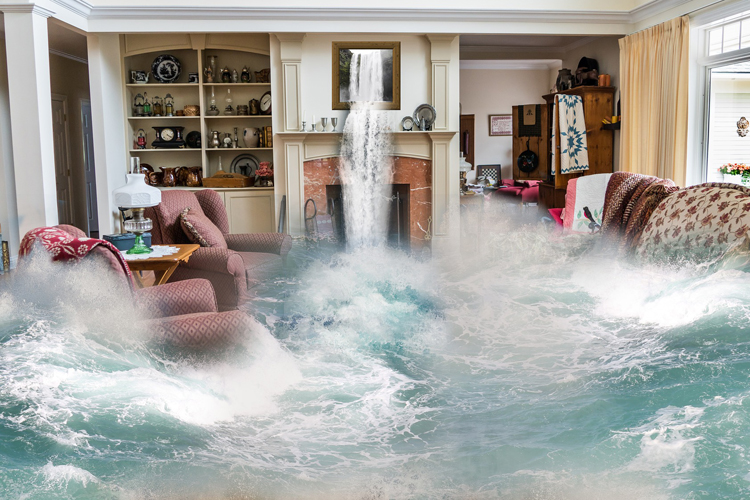6 Water Damage Reconstruction Do's and Don'ts.
6 Water Damage Reconstruction Do's and Don'ts.
Blog Article
This post which follows about Keeping Your Home Safe This Holiday Season is exceedingly enlightening. Don't miss it.

Water gives life, but water breach on some parts where it's not meant to be can cause damages as well as trouble. It can peel off away the surface area and also wear down the material's structure if the water permeates right into your framework. Mold and also mold likewise flourish in a wet environment, which can be unsafe for your and your family members's health and wellness. On top of that, residences with water damages smell moldy as well as old.
Water can come from numerous sources like tropical cyclones, floods, burst pipelines, leakages, and also sewer concerns. If you have water damages, it's better to have a functioning expertise of safety and security precautions. Below are a few guidelines on just how to handle water damages.
Do Prioritize House Insurance Insurance Coverage
Seasonal water damage can originate from floodings, seasonal rainfalls, and wind. There is likewise an incident of an abrupt flooding, whether it came from a faulty pipeline that instantly ruptures into your residence. To shield your house, obtain house insurance that covers both acts of God such as natural calamities, as well as emergencies like damaged plumbing.
Do Not Neglect to Turn Off Utilities
When catastrophe strikes and you're in a flood-prone location, switch off the main electrical circuit. Shutting off the power prevents
When water comes in as water offers as a conductor, electrical shocks. Do not forget to switch off the major water line valve as a way to prevent more damages.
If the floodwaters are getting high, maintain your furnishings secure as they can walk around as well as cause added damages.
Do Stay Proactive and Heed Weather Condition Alerts
If you live in a location pestered by floods, stay positive as well as prepared at all times. Pay attention to the information and also discharge cautions if you live near a body of water like a lake, river, or creek .
Don't Neglect the Roof
Before the weather transforms shocking as well as for the worse, do a roof inspection. A far better behavior is to have a yearly roof evaluation to reduce complex concerns and also future troubles. An excellent roof covering without leakages and holes can be a great shield versus a tool as well as the rain to prevent rain damages. Your roofing professional must care for the defective rain gutters or any other indicators of damages or weakening. An evaluation will protect against water from flowing down your walls and saturating your ceiling.
Do Focus On Tiny Leaks
There are red flags that can attract your focus and also indicate to you some damaged pipes in your home. Signs of red flags in your pipes include bubbling paint, peeling wallpaper, water touches, water spots, or leaking sounds behind the walls. Repair work and also examine your plumbing repaired before it results in massive damages to your home, financial resources, as well as a personal problem.
Don't Panic in Case of a Burst Pipeline
Timing is crucial when it comes to water damage. If a pipeline ruptureds in your home, quickly shut off your primary water shutoff to cut off the source as well as protect against more damages. Call a reputable water damages remediation specialist for help.
Water provides life, however water breach on some components where it's not intended to be can result in damage and hassle. In addition, residences with water damage scent old and also musty.
Seasonal water damages can come from floods, seasonal rains, and wind. Indicators of red flags in your pipelines consist of bubbling paint, peeling off wallpaper, water touches, water discolorations, or leaking sounds behind the wall surfaces. If a pipe ruptureds in your residence, instantly shut off your major water valve to cut off the source and also protect against even more damages.
Some Do's & Don't When Dealing with a Water Damage
DO:
Make sure the water source has been eliminated. Contact a plumber if needed. Turn off circuit breakers supplying electricity to wet areas and unplug any electronics that are on wet carpet or surfaces Remove small furniture items Remove as much excess water as possible by mopping or blotting; Use WHITE towels to blot wet carpeting Wipe water from wooden furniture after removing anything on it Remove and prop up wet upholstery cushions for even drying (check for any bleeding) Pin up curtains or furniture skirts if needed Place aluminum foil, saucers or wood blocks between furniture legs and wet carpet Turn on air conditioning for maximum drying in winter and open windows in the summer Open any drawers and cabinets affected for complete drying but do not force them open Remove any valuable art objects or paintings to a safe, dry place Open any suitcases or luggage that may have been affected to dry, preferably in sunlight Hang any fur or leather goods to dry at room temperature Punch small holes in sagging ceilings to relieve trapped water (don't forget to place pans beneath!); however, if the ceiling is sagging extremely low, stay out of the room and we'll take care of it DO NOT:
Leave wet fabrics in place; dry them as soon as possible Leave books, magazines or any other colored items on wet carpets or floor Use your household vacuum to remove water Use TV's or other electronics/appliances while standing on wet carpets or floors; especially not on wet concrete floors Turn on ceiling fixtures if the ceiling is wet Turn your heat up, unless instructed otherwise

Hopefully you enjoyed our topic about Preventing Fires and Water Damage In Your Home. Thank you so much for spending some time to read through our short article. Sharing is nice. Who knows, you could be doing someone a favor. Thank you for taking the time to read it.
Report this page